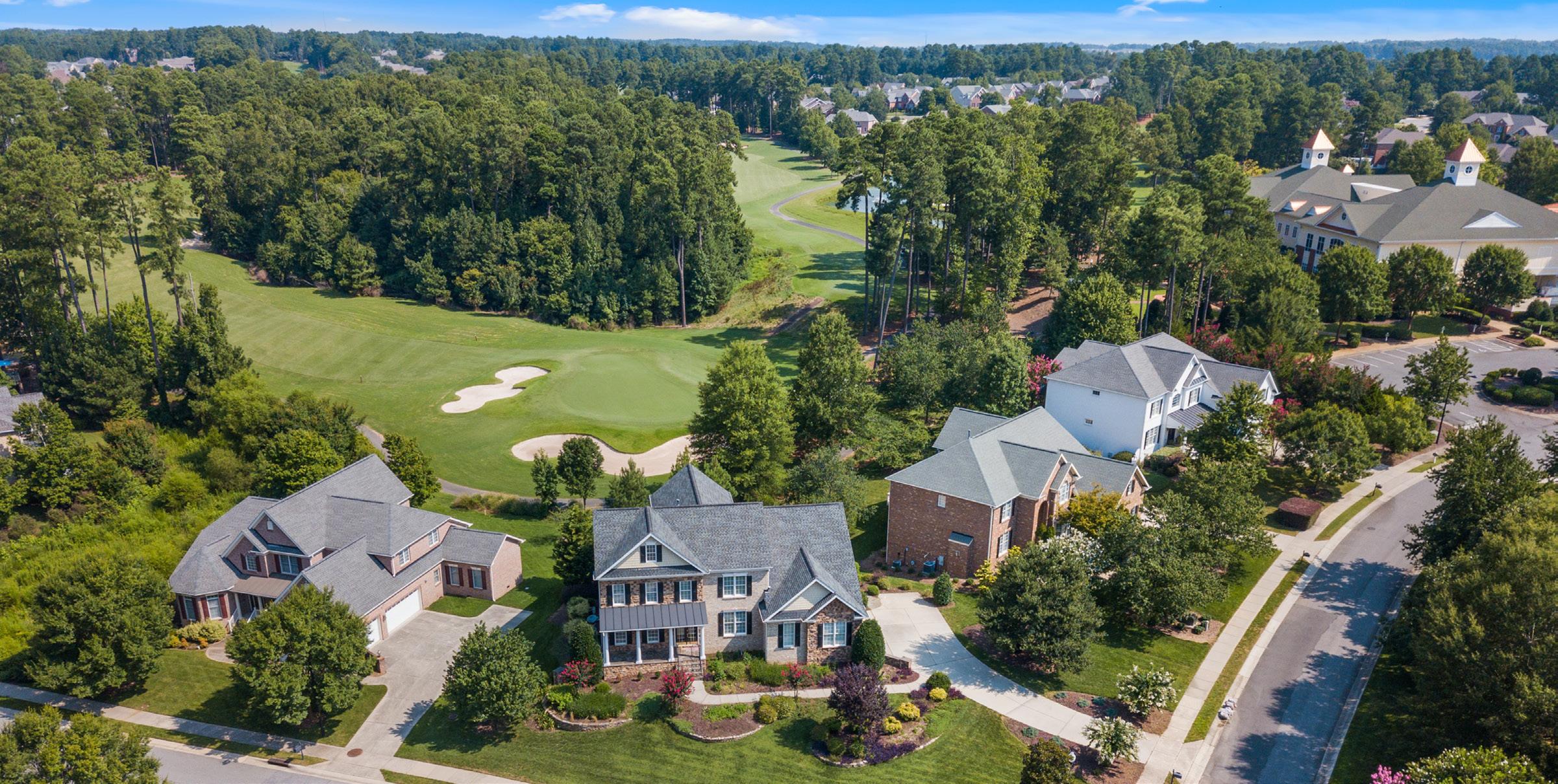
5 minute read
NORTH AMERICAN LUXURY REVIEW
New Mindsets and Location Trends
Relocation, migration, and multiple homeownership are not new words in the world of real estate, luxury or not; it’s one of the main reasons that the industry exists. After all, helping people find new homes is a Realtor’s bread and butter.
Advertisement
Throughout history, we have seen mass migrations and changes affected by tragic events, such as earthquakes and floods, or by opportunities, such as gold rushes, or, in more modern times, large corporations opening offices in new locations.
The affluent have always been able to be more fluid in their real estate decisions and choices, moving or adding new homes to suit their tastes and current requirements. They have certainly exerted their power of influence on the popularity of a location within their own social sphere, often increasing demand and prices disproportionately.
However, the pandemic years probably saw the biggest change in the decision process of the affluent as a group, whether it was fleeing from metropolises or being unable to travel at their leisure. These recent moves were anything but typical, with rural and destination locations seeing some of the largest increases of affluent wealth impacting their communities.
Equally, through the ebbs and flows of the last three years, the luxury real estate market itself has continued to diversify and often defy expectations. From London to Miami, Los Angeles to Sydney, and throughout the rest of the world’s major markets, the demand for luxury properties has largely continued to grow, albeit at a slower rate. As a result, the level of available inventory has declined, and in some luxury markets, it continues to fall each month. Consequently, prices have either remained stable or are still experiencing increases.
Now as the pandemic fades (officially, the World Health Organization said on Friday, May 5th, 2023, that COVID-19 no longer qualifies as a global emergency, making this a symbolic end), what are the long-term effects of the decisions made by the wealthy during the last three years and how does this bode for the future?
Priorities Have Changed
When dealing with a disease that didn’t discriminate, it hit home for many as to what was important, and they questioned whether they were living their “best lives.” Choices to move away from their current life, move closer to family, find more fulfillment outside of the work environment, or even create a live work arrangement by not having to be in the office became significant attitude changes.
According to Katrina Johnston-Zimmerman, Philadelphia-based anthropologist and founder of THINK.urban, during a recent interview with the National Association of Realtors (NAR), the journey starts within.
“A lot of people felt a certain urgency for purpose in life and to change the way they were living,” Zimmerman says of the pandemic-induced changes. “This was a cumulative and collective existential crisis. When you’re faced with something really, really up close — ‘Am I happy?’— you’re forced to actually revisit it.”
Zimmerman cites the overall change in mindset from “working to live” toward more purposedriven lifestyle decisions as a key shift.
Finding a home that fulfills their lifestyle decisions is still at the top of the list for the affluent, and according to a recent report from Coldwell Banker Global Luxury, there was a 10% increase in the number of affluent1 owning three or more homes by the end of 2022.

“With remote work expected to be permanent for many high-income earners, secondary desires – like creating generational wealth, the need for long-term wealth-building assets, and a strong push to spend quality time with their favorite people in memorable locales – have coalesced around secondary homes, taking them from a niche market to a mainstay of the affluent lifestyle.” 2
The Wealthy are on the Move
While the top cities in the U.S., New York, Los Angeles, Chicago, and San Francisco, and in Canada, Toronto and Vancouver, remain the wealthiest locations in each country, respectively, there has been growth in other locations due to the ability to work remotely or have the flexibility when to work in the office.
Variables such as the draw of living in vacation destinations, more rural areas, being attracted to new tech and business hubs, and increasing taxes have allowed affluent buyers to take advantage of their newfound flexibility and extend their home search horizons.
According to London-based consultancy Henley and Partners, the most notable cities for migration in the U.S. are Austin, Greenwich, Miami, and Scottsdale3, and in Canada, cities such as Oakville, Quebec, and Calgary are the top destinations4
Equally, the strong U.S. dollar has enabled wealthy Americans to diversify their portfolios and head off to new opportunities, whether close to home, such as Canada and Mexico, or further afield to Europe and Central America.
Globally, overseas buyers did return to many property markets during 2022, but in smaller numbers and with different priorities, not helped by the addition of taxes on foreign buyers in some of the more popular markets in Canada, the U.S., and Australia.
Firm favorites such as Miami and New York City are seeing a definite uptick, and expectations are in Toronto that the two-year ban on foreign buyers will only create a pent-up demand. Despite having seen some of the highest percentage increases in their property prices during the pandemic, the U.S. and Canada have long-term appeal for risk-averse overseas buyers. Both countries’ real estate markets have a history of stability that provide a hedge against inflation.
Demand Drives Innovative Thinking
As global demand for luxury homes continues to increase it is not only single home builders that have to produce innovative solutions to provide for this group of new home seekers – which is why locations such as New York, Dubai, Monaco, Malaysia, Hawaiian Islands, and others have created new luxurious developments over the last few years.
Destination locales such as Park City and Naples in the U.S. or the Okanagan in British Columbia, Canada, have seen builders and developers recognize the opportunity. Once, these were seasonal locations, but with the growing number of affluent deciding to stay or run two-full time residences, the ‘if you build, they will come’ mantra seems to be paying dividends as demand continues to grow from new arrivals too.

Move-in ready homes are still in high demand, and for many smaller cities or towns that have become new tech, medical, or educational hubs, the supply of new luxury properties has attracted a new generation of affluent buyers moving to these areas.

Three years of non-stop price increases combined with global inflation is also creating a new trend – despite the desire of many not to take on renovations, even the negatives of challenging supply chains and trades are proving for some to be less of a headache than endless searches for properties in inventory short locales.
Others are seeing the opportunity to purchase land and build a home – again property taxes and the cost of construction are often working out lower than buying a resale.
Currently, homes on the market that need work still feel like a veritable discount compared with move-in ready, but with the lack of inventory, these deals might also soon disappear.
The art of selling and buying in this market needs a critical and analytical approach; understanding the realities and setting expectations accordingly will ensure that goals are achieved. For homeowners looking to buy or sell in today’s market, we recommend working with a Realtor who can capitalize on the preferences, trends, and demands in this dynamic and evolving environment.
1. Number of individuals with $5M+ in net worth
2. https://issuu.com/thereportgroup/docs/cbgl_the_report_2023?fr=sMTdjNjUzNTYxMDI3
3. https://cdn.henleyglobal.com/storage/app/media/HP_USA_Wealth_Report_23.pdf
4. https://leapscholar.com/blog/best-cities-to-live-in-canada/
For The Luxury North American Market
Single-Family Homes Attached Homes Single-Family List Price Attached List Price
All data is based off median values. Median prices represent properties priced above respective city benchmark prices.



